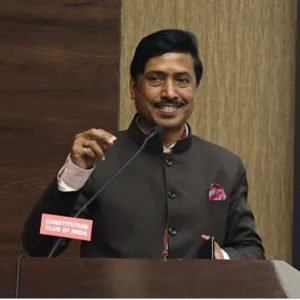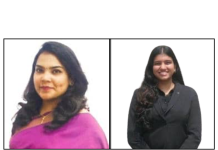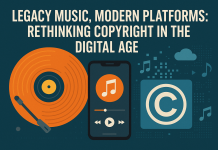[11th Anniversary of Enactment of the Copyright (Amendment) Act, 2012
and the “World Music Day” on 21st June]
[About Author: Dr. G.R. Raghavender (an Intellectual property Law and Technology Expert and Retd. Joint Secretary, Department of Justice, Ministry of Law and Justice & Former Registrar of Copyrights, Copyright Office, Government of India]
Today, 21st June is the eleventh anniversary of the Copyright (Amendment) Act 2012 (Act 24 of 2012) coming into force after it was notified in the Gazette by the Central Government on June 21, 2012. It was earlier passed unanimously by the Indian Parliament on May 22, 2012, and received presidential assent on June 7 of the same year. This was the major amendment to the existing Copyright Act of 1957 that brought in several disruptive new provisions in line with minimum standards under the WIPO Internet Treaties by extending copyright protection to modern digital and internet networks.
Today, June 21, is also “World Music Day”, also known as ‘Fête de la Musique’, is an annual event that celebrates the power of music and its universal language. Originating in 1982 in Paris, the day promotes public performances by musicians of all genres, fostering a lively and welcoming environment for music lovers everywhere. On this wonderful day, musicians and music fans from all over the world gather to play and take in diverse musical genres. (I dedicate this article to those beautiful and innovative musicians who create melodious music.)
The primary objectives of the Copyright (Amendment) Act 2012 were to promote creativity, innovation, and the development of the copyright creative industries in India on digital and online platforms while at the same time protecting the rights of creators such as authors, music composers and performers, broadcasting media, and other stakeholders in the industry. The Act aims to achieve this balance between authors’ and right owners rights in registered copyright societies. Overall, the 2012 Amendments represent a significant step forward in copyright law in India. The Act introduces several new provisions that better protect the rights of creators while at the same time promoting creativity, innovation, and the development of the cultural industry in India. The Act also addresses the challenges posed by new technologies and practises and ensures that copyright law in India is in line with international standards. The following are the key elements that these amendments introduced:
Statutory Licenses:
Statutory Licence for Cover Versions in a new section 31C was introduced replacing Sec. 52(1)(j) in the Act in order to discourage the misuse of the provisions to make ‘cover versions’ or remixes of songs’ only after completion of 5 years of the original songs. This was devised to suit the needs of the music industry. This policy initiative encouraged new talent and promoted innovation.
The AI-generated songs created by mimicking the voices and styles of various singers may be regulated under the statutory licence for “version recordings” under Sec. 31C of the Act. This licence allows individuals to create AI-generated songs for commercial purposes using sound recordings of literary, dramatic, or musical works, provided the Commercial Bench of the High Court fixes the royalty to be paid to the singers and right owners.
Section 31D – Statutory license for Broadcasting:
Statutory license for Broadcasting musical works and sound recordings was introduced in a new section 31D with the aim of simplifying the licensing process and ensuring that copyright owners receive fair compensation for the use of their works. The world over, statutory licences as a temporary legal tool to encourage the fledging industries were introduced in addition to compulsory licences for broadcasting as mandated in Article 14bis of the Berne Convention and the TRIPS agreement. The legislative intention was to support the newly emerging FM radio broadcasting in the Phase II tender process of the Ministry of Information and Broadcasting, which aimed to spread FM radios to Tier II cities in India, which could not be possible without easy access and the availability of film music. This policy aimed to strike a balance between the rights of copyright owners and the public interest and not subject FM broadcasters to lengthy, expensive, and potentially monopolistic negotiations. Initially, this policy was meant for FM broadcasters, but the pressure from TV broadcasters led to the introduction of an arrangement under which the Copyright Board, under the scheme of Section 31 D and the rules framed thereunder, would fix separate rates of royalties for TV and radio broadcasters.
On December 31, 2020, after 7 long years of notification of the Copyright Rules, 2013, an IPAB bench consisting of Chairman Manmohan Singh J. and two technical members, Surya Senthil and SP Chockalingam, delivered an outstanding statutory licence order for radio broadcasts under Section 31D. But, unfortunately, the Delhi High Court in January 2021 came out with a disastrous order holding that performing royalties are not payable to authors of underlying works when a sound recording is broadcast. This order was damaging to the interests of authors and composers when the legislation recognised and granted them the right to receive royalty. Finally, this issue was generously solved by the Bombay High Court by issuing a joint order on April 28, 2023, in two separate cases, Indian Performing Rights Society Ltd. v. Rajasthan Patrika Pvt. Ltd. and Indian Performing Rights Society Ltd. v. Music Broadcast Ltd., making it clear that, following the 2012 amendment, communicating to the public a sound recording will mean utilising the underlying literary and musical works therein.
Interestingly, during these turbulent eleven years, FM radio broadcasters were surviving and flourishing in their businesses without the statutory licence fee that was suppose to make film music available to them. When Sec 31D was introduced, there were 245 FM radio stations operating in 86 cities in India, growing at a CAGR of 14% annually and generating Rs 14 billion in revenues in 2012–13 (E&Y/CII Report). The FM industry was expected to grow in the next 3 years at a CAGR of 18% annually, generating Rs 23 billion in advertising revenues in 2012–13. As of September 30, 2022, there were 388 operational FM radio channels in 113 cities run by 36 private FM operators, whose radio advertisement revenue grew 11% to Rs 385.86 crore against Rs 345.12 crore for 388 private FM radio channels in the previous quarter ended on June 30, 2022 (TRAI Performance Indicators Report—Quarter ending September, 2022).
As the above statistics unravel the fact that FM radio channels are no longer a fledgling industry, they don’t need the support of Sec. 31D as they are not suffering for lack of content and are functioning in a robust manner without the support of any statutory licence scheme. It is understood that the television broadcasting industry garnered revenue of Rs 9,500 crore in FY 2022 (KPMG Report). As per the Deloitte India report, the India OTT market is expected to reach US$ 3.5 billion (Rs 287.36 crore) by 2025.
This provision was never intended to support webcasters, OTT streamers, or app-based music providers. However, a narrow interpretation along with a disjunctive interpretation of Sec. 31D(1) led to the unnecessary non-legislative policy initiative of expanding the statutory licence scheme to OTT platforms by an administrative order in 2016 by DPIIT, which was squashed by the Bombay High Court. The OTT webcasters or app-based music providers were never part of the Sec. 31D scheme, and they are earning humongous profits using film music content. In view of the above facts, the Central Government may propose, in the forthcoming amendments to the Copyright Act, to delete Section 31D as it has become both obsolete and unnecessary. Any problems raised in voluntary licencing or abuse of dominance by the music industry or other content owners like IPRS, PPL, or ISRA can be addressed by FM radio or TV channels challenging the tariff schemes of Copyright Societies (section 33A) or other content owners in the Commercial Benches of High Courts or seeking the compulsory licence under Section 31 of the Act.
Compulsory Licensing:
Unlike the most controversial introduction of statutory licence provisions, the amendment also introduced provisions for compulsory licencing, which allows for the use of copyrighted works without the permission of the copyright holder. These provisions specified conditions and procedures for granting compulsory licences, such as ensuring that the copyright holder receives reasonable compensation. Compulsory licencing provisions were intended to promote competition, innovation, and the dissemination of knowledge in certain circumstances where access to copyrighted works was crucial for the public interest or when the copyright holder was deemed to have abused their exclusive rights.
Amendments introduced compulsory licensing for “orphaned works” under s. 31 A to be provided through the Copyright Board to publish or communicate to the public such work or a translation thereof in any language in the case of any work published or communicated to the public and the work is withheld from the public in India, the author is dead or unknown or cannot be traced, or the owner of the copyright in such work cannot be found. Another compulsory licensing provision was introduced to allow for the publication of copyright works in formats for profit for persons with disabilities [sec. 31B].
Special Exceptions for Visually Impaired and other Physically Disabled:
The amendments have carved out special copyright exceptions to visually impaired and other physically disabled to access specially formatted copies under section 52 (1) (zb) to allow the production of copies of all works in all accessible formats copies for the persons with visual, aural or other disability by the educational institutions, libraries and archives including non-profit organisations even though these specially formatted copies are commercially available. Despite the Indian delegation successfully engaged in exporting this provision in the Marrakesh Treaty to Facilitate Access to Published Works for Persons who are Blind, Visually Impaired or Otherwise Print Disabled, 2013, the ‘Book Famine’ for the visually impaired students unfortunately still continues in India. Under the ‘New Education Policy’, there should be a coordinated policy approach by the Ministry of Education and Department of Empowerment of Persons with Disabilities on war-footing to make all kinds of books made available in specially formatted copies to the students with the persons with visual, aural or other disability. The Ministry of Information Broadcasting and the Prasar Bharati should start a pilot project in Delhi Doordarshan Kendra to provide ‘audio description‘ of select programmes in the weekends for the entertainment of visually impaired on the lines of the Australian Broadcasting Corporation.
Digital Rights Management:
To address the challenges posed by digital technologies, the Copyright (Amendment) Act, 2012, incorporated provisions related to digital rights management (DRM) in compliance with the provisions of the WCT, 1996, and WPPT, 1996 to introduce measures to prevent the circumvention of technological protection measures (TPMs) and rights management information (RMI). This provision helped to protect digital content from unauthorised use and piracy, which has become a menace to the Indian film industry, ensuring that creators and copyright holders could exercise control over their works in the digital realm. These provisions played a key role in the growth of more than 40 OTT platforms in India, which garnered Rs 6.8 crore in the year 2022 from subscriptions and is expected to shoot up to Rs 9.1 crore in the year 2025.
Safe Harbour & ISP Liability
The Amendment Act also introduced a safe harbour provision that limits the liability of internet service providers and other intermediaries for copyright infringement by third parties. These provisions ensure that intermediaries are not held responsible for the actions of their users, provided they take reasonable steps to prevent or remove infringing content.
Performers Rights
The amendment also introduced provisions for protecting performers rights in digital and online networks, granting exclusive rights to performers in their performances and also moral rights. With the introduction of the ‘Right to Receive Royalties’ (a German concept) in the relevant provisions, the performers gained control over the commercial exploitation of their performances outside of the cinema halls, which had previously been lacking. This recognition and protection of performers rights aligned Indian copyright law with international standards and provided a boost to the entertainment industry. The Indian delegation successfully exported the ‘Right to Receive Royalties’ model to Article 12 on Transfer of Rights of the Beijing Treaty for Audiovisual Performances, 2012.
This provision gave birth to the Indian Singer Rights Society (ISRA), a registered performers society established to protect the rights of singers and ensure that they receive fair royalties for their performances. Recently, Indian Music Industry (IMI) and Indian Singers Rights Association (ISRA) joined hands to sign a historic and landmark agreement that covers all record labels, singers, and musicians in India. The accord is set to benefit all stakeholders across the Indian music industry and help the music market grow. This development reminds us of the historic 1993 Memorandum of Understanding (MoU) between the Indian Performing Rights Society(IPRS), the Indian Phonographic Industry(IPI, now IMI), and Phonographic Performance Pvt. Ltd (PPL).
Rights of Authors, Composers and Copyright Societies:
The Copyright (Amendment) Act, 2012, aimed to promote the efficient functioning of copyright societies by strengthening authors and owners rights, addressing unfair practises, and enabling author reclaims. It also introduced regulations for copyright societies, ensuring transparency and accountability and protecting authors’ rights. The Act emphasised the importance of maintaining a balance between the interests of authors and right owners in copyright societies in the public interest, especially in the Indian Performing Rights Society Limited (IPRS).
The amendment protected the rights of authors, including lyrics and music composers, in cinematographic films and sound recordings. It prohibits assigning royalties to works contrary to copyright terms, except to legal heirs or copyright societies for collection and distribution. Any contract to the contrary is void. This also grants non-film songs the right to receive royalty payments when included in cinematograph films or sound recordings for commercial exploitation.
Copyright Board and IPAB
The 2012 amendments transformed the Copyright Board into a permanent statutory body to play a crucial role in deciding copyright-related disputes between authos and publishers, disputes over the tariff scheme of the copyright society, rectification of copyright, and setting royalty rates for statutory and compulsory licences. However, in 2017, under the Tribunal Reforms Phase I, the Government of India abolished the Copyright Board through the Finance Act, 2017 and merged it with the Intellectual Property Appellate Board (IPAB). This move aimed to streamline copyright administration and reduce the burden of pending cases by transferring its functions to other existing bodies, including the IPAB. However, in 2020, the Indian Parliament passed the Tribunal Reforms (Rationalisation and Conditions of Service) Act, which sought to abolish several tribunals, including the IPAB. This reform transferred the IPAB powers to the commercial courts and the Commercial Benches of the High Courts created under the Commercial Courts Act, 2015.
The Way Forward:
India’s copyright regime has experienced notable developments in recent years, responding to the evolving needs of various stakeholders in the digital age. The future of India’s Copyright Act in relation to generative AI and blockchain technologies holds several intriguing possibilities and challenges. As these technologies continue to evolve, they raise unique copyright considerations that need to be addressed by legal frameworks to promote ’Creative India and Innovative India as per the National IPR Policy during the ‘Amrit Kala’. Here are some key aspects to consider:
- AI authorship and ownership issues: Generative AI refers to algorithms and systems that can autonomously create original works, such as music, art, and literature. As AI-generated works become more prevalent, the question arises as to who should be attributed copyright authorship and ownership. The copyright system in India may discourage authorship or provide incentives for AI machines, as it contradicts the existing concept of granting IP rights to only natural persons. However, under Section 3(42) of the General Clauses Act, 1897, AI machines can be granted legalistic or juristic person status based on their working models, and associated persons, such as data scientists, software designers, corporate owners, or users, can manage rights to AI-generated original works.
- AI learning may not be considered an infringement of copyright in the Indian context. India’s Copyright Amendment Act (2012) clarifies that incidental storage of works in electronic transmission or communication is not an infringement of copyright. This provision protects Generative AI developers and users from copyright infringement while accessing and learning from copyright-existing works. However, unauthorised commercial use without consent and compensation is considered an infringement.
- DPIIT should introduce guidelines for copyright protection of AI-generated works in India based on the Copyright Act, 1957, to discourage infringement and unclog commercial courts. This will help address the complex and evolving area of AI-generated works, ensuring fair and ethical considerations.
- There is a need to introduce express Text Data Mining (TDM) exceptions by amending the Copyright Act, 1957, for the use of non-commercial works generated for education, research, library, and archival purposes, including the use by physically disabled persons. There’s also an urgent need to introduce guidelines to regulate licencing for the use of AI-enabled TDM for commercial purposes.
- Blockchain technology, a distributed ledger that may be introduced for the copyright registration, collective management, and enforcement by providing decentralised, transparent, and tamper-proof record-keeping systems. It also facilitates the tracking of unregistered works by enabling copyright holders to create digital certificates, simplifying infringement detection. DPIIT should introduce guidelines for the use of blockchain ledger technologies to be adopted by the copyright societies, logged content users like broadcasters and OTT platforms, and the publishers to ensure transparency in royalty management.

















